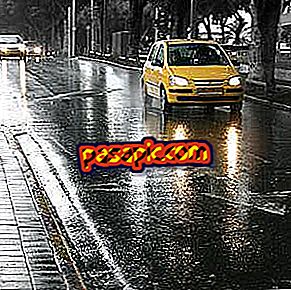How to know where there are radars

Normally, drivers know the places where the Directorate General of Traffic has placed the radars on the roads through which we usually circulate. However, when we embark on a long journey, things change and it may be good for us to know where they are located . Based on the idea that the function of radars is that we reduce speed and, with this, contribute to less accidents and deaths on the roads, in .com we explain how to know where there are radars .
one
The Directorate General of Traffic, when installing the fixed radars, what you are looking for is that we reduce the speed. For this reason, you are interested in knowing where these control points are located and on your website you have an updated list of radars. The web incorporates a search engine in which we can include as criteria or the province or the road through which we are going to circulate.
two
In the event that we have not consulted this web page before starting the march, we should know that there are traffic signs that indicate the existence of radars . They are rectangular, in blue background and with white letters, with legends that indicate "For your safety" and "Speed control". The image is formed by a point from which waves that reach a car, a motorcycle and a truck.

3
Technology has also come to lend a hand with radars and there are numerous mobile applications that warn us of the proximity of one of these control points:
- RAAC Radar . It's free for both iOS and Android. Includes a sound warning.
- M8. It is also free for these two operating systems and allows you to plan the route before leaving.
- Speed camera warning. This application is for payment. It costs 1.79 for iOS and 1.99 for Android. Highlight the provision of notice by vibration, very useful for bikers.
4
The indicated applications warn us both of the existence of fixed and mobile radars . At present, these devices that warn of the presence of control points are legal, not the inhibitors, which are prohibited.
However, a law is being processed in Spain that will leave these devices in a legal limbo, if the regulations are not changed during their processing. In a chapter, the law indicates that radar warders are prohibited and that they will impose a sanction of 200 euros and the subtraction of 3 points; while in another chapter the regulations state that the mechanisms that inform the position of the radars are allowed.
5
Regarding the mobile radars, there are those that are placed on a tripod on the side of the road and those inside the incognito vehicles of the Civil Guard, both circulating and parked. The mobile radars are the ones that the Spanish Government will prioritize in 2014, especially on secondary roads.
6
Normally, the Civil Guard vehicles that carry a mobile radar are of discrete color, gray or blue, and we can identify the agents because, although they do not go in uniform, they are obliged to wear reflective garments.
7
Although by their nature, mobile, these radars can be located anywhere, usually they are placed almost always in the same sections. If, suddenly, we observe that most of the vehicles that circulate on our way reduce speed without just cause, it can be because in that place mobile radars are usually located.
- Our recommendation is that, for your own good and that of the rest of the drivers, always respect the traffic limits and the rest of the road safety regulations.


